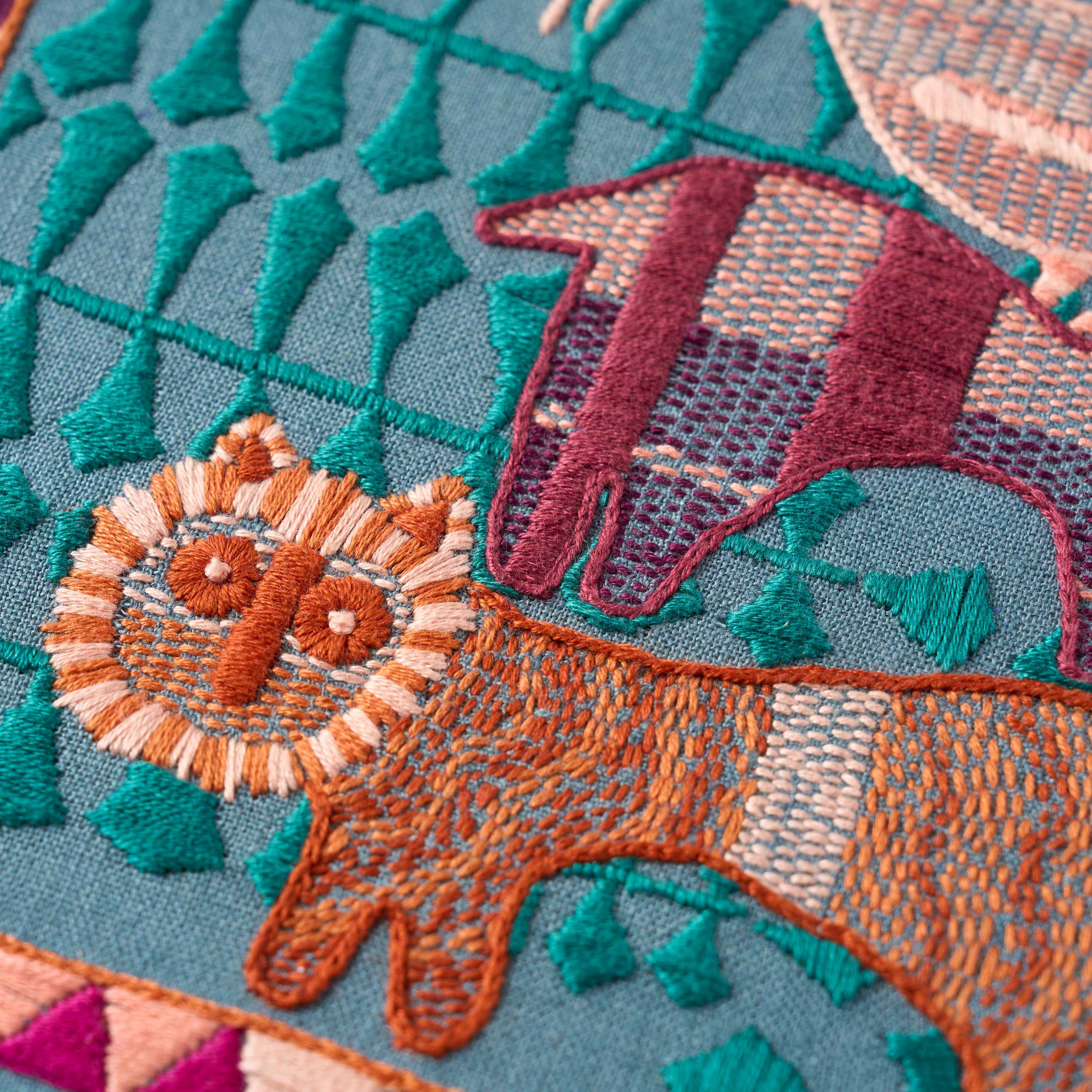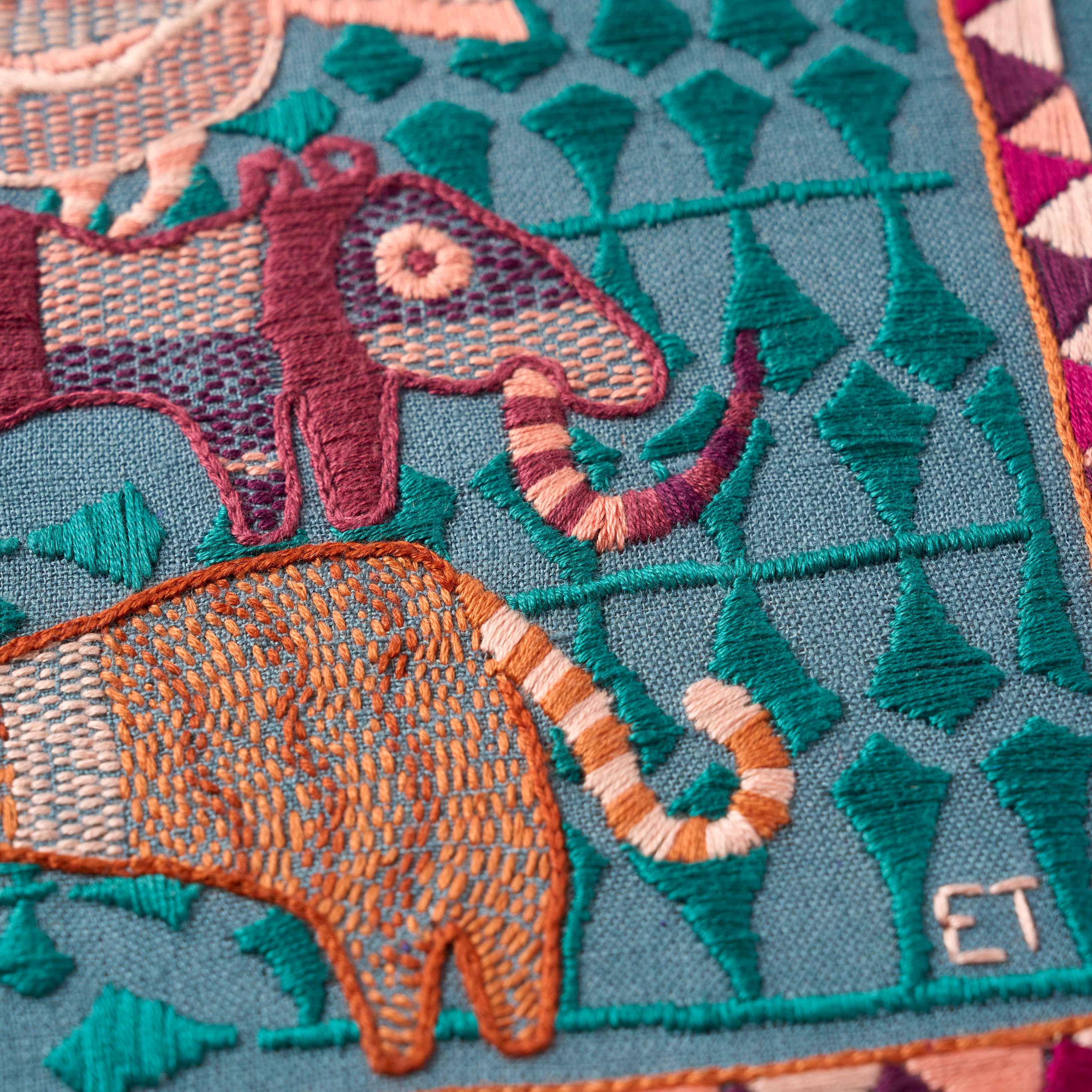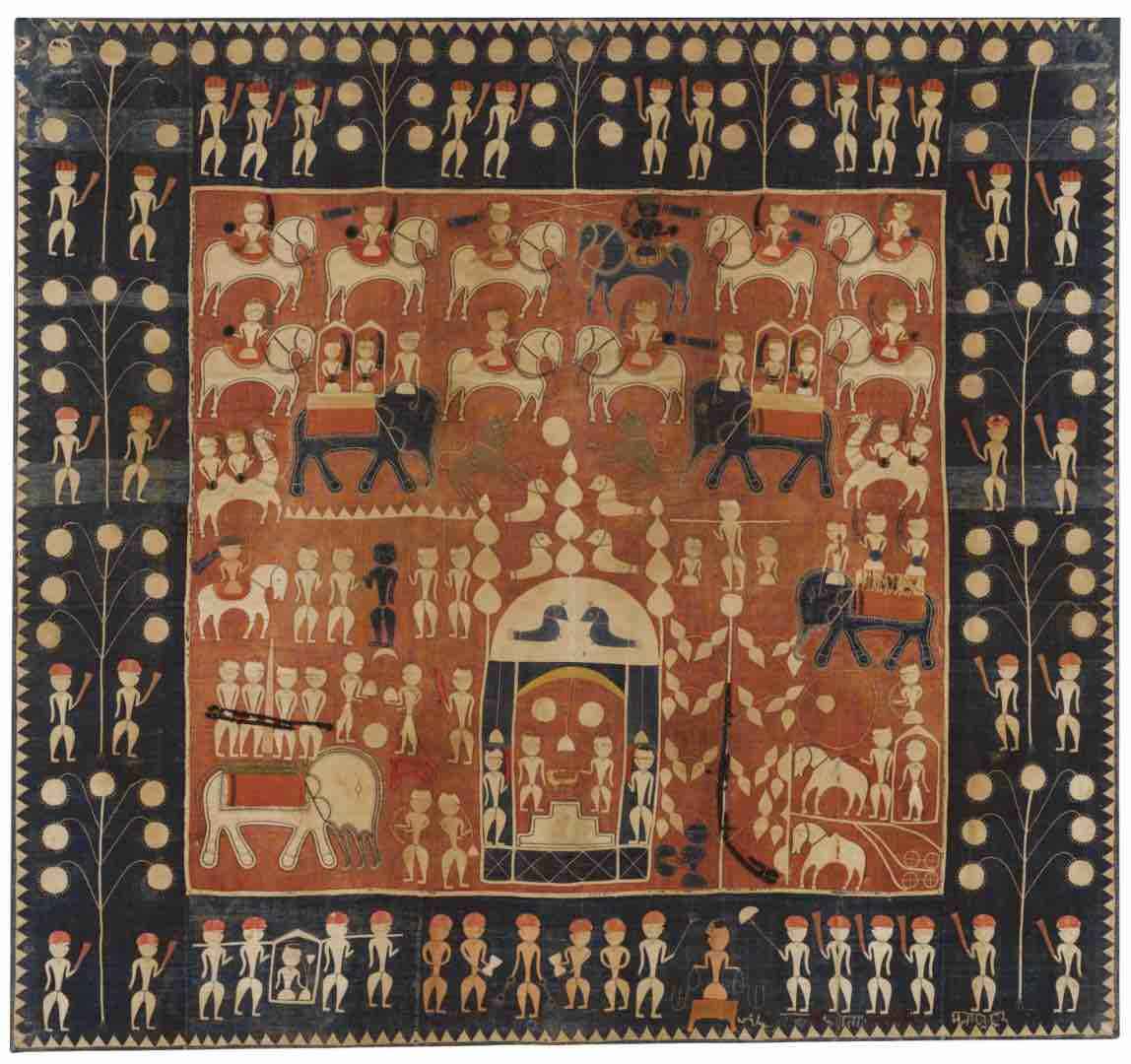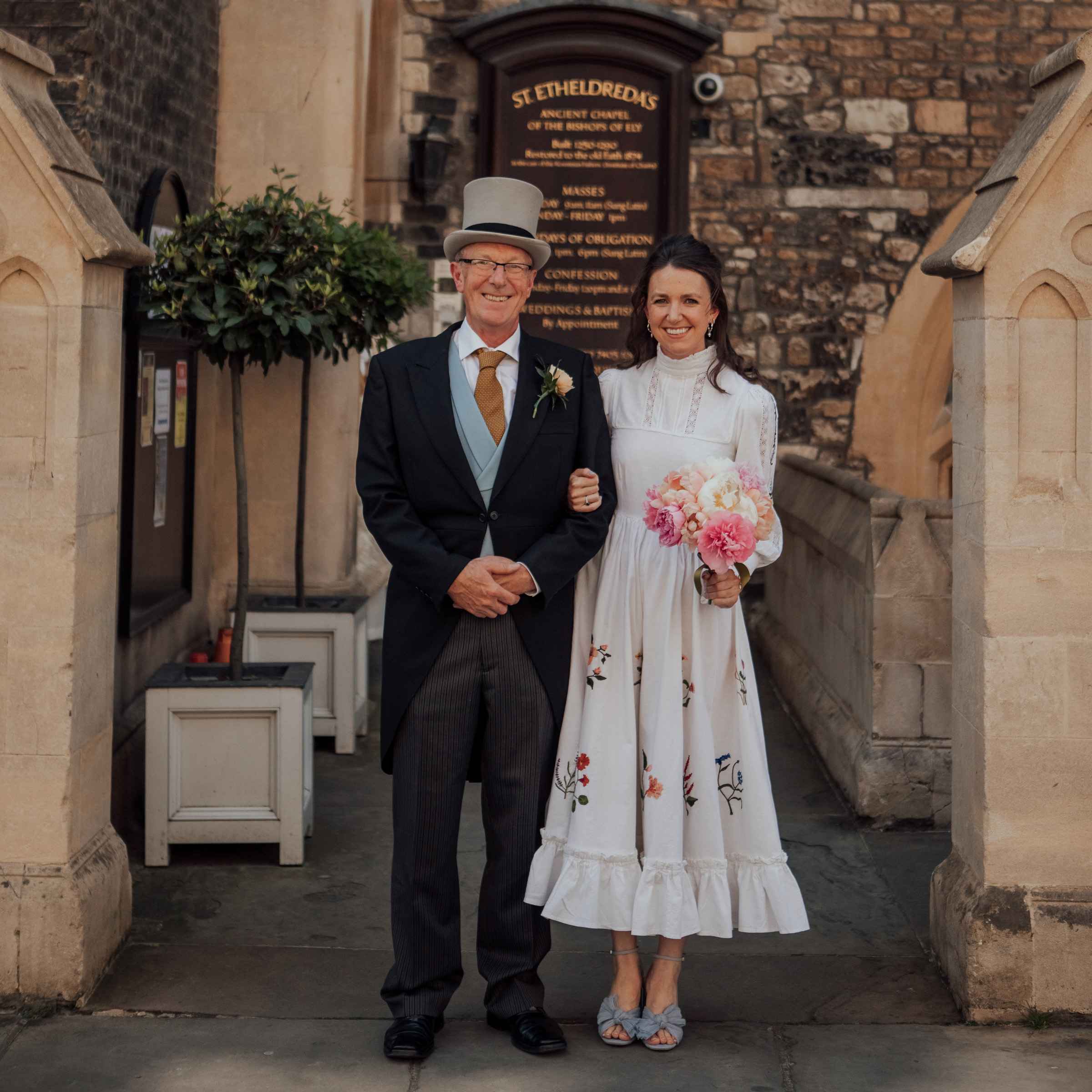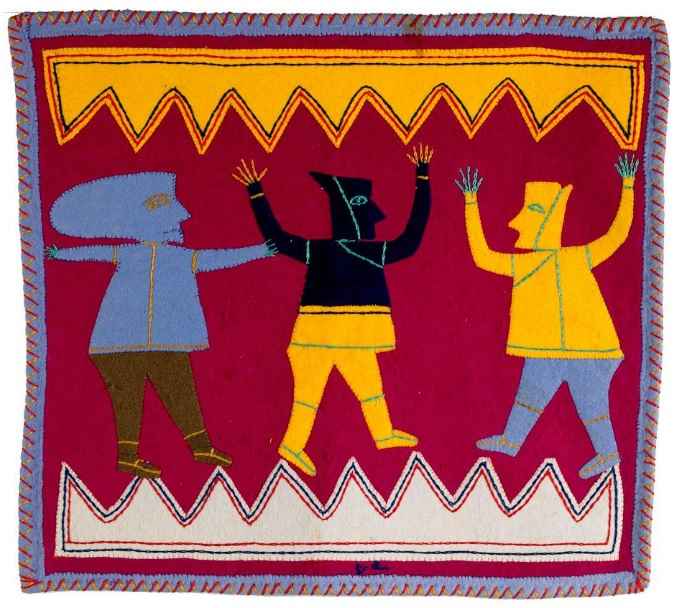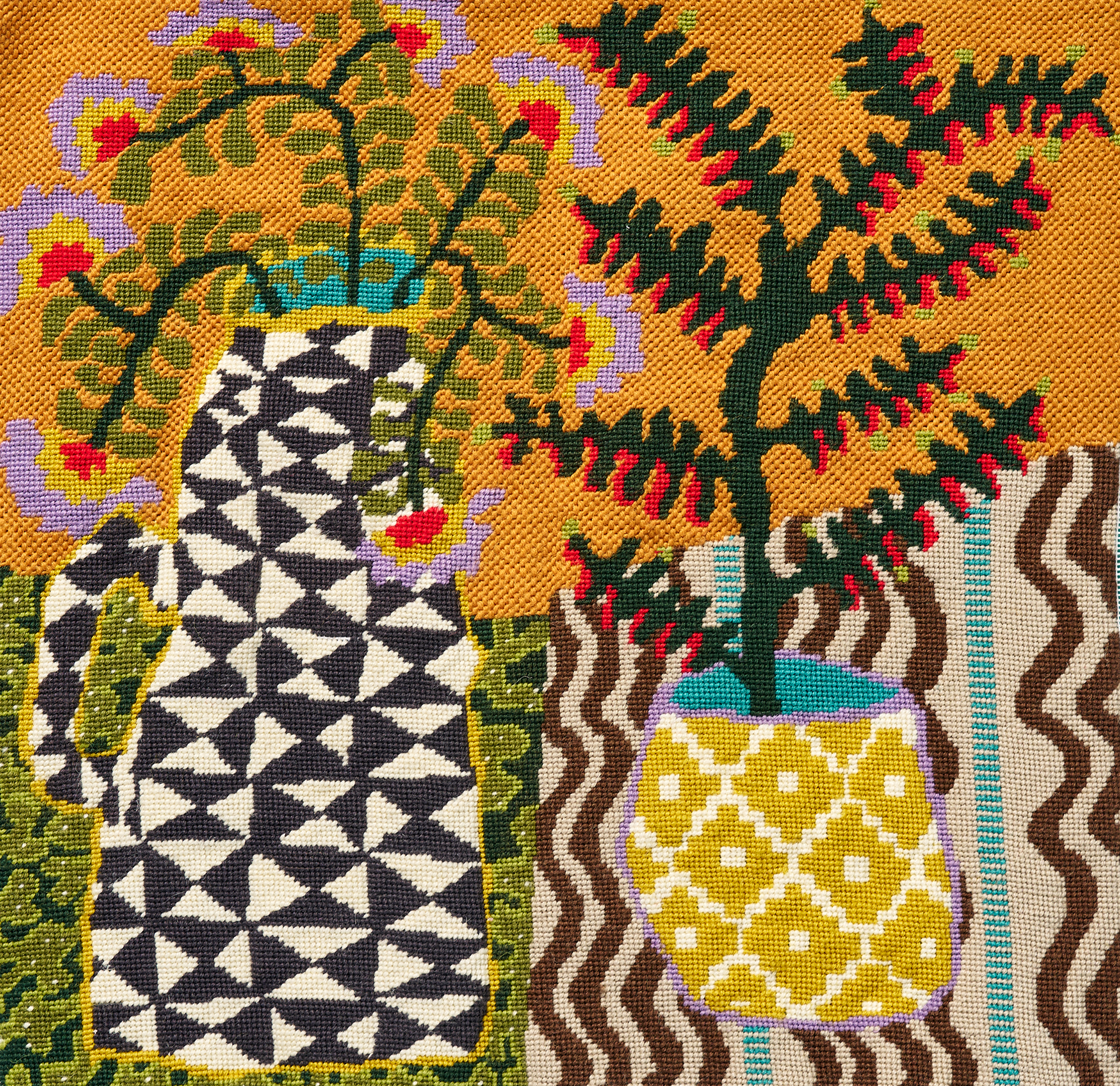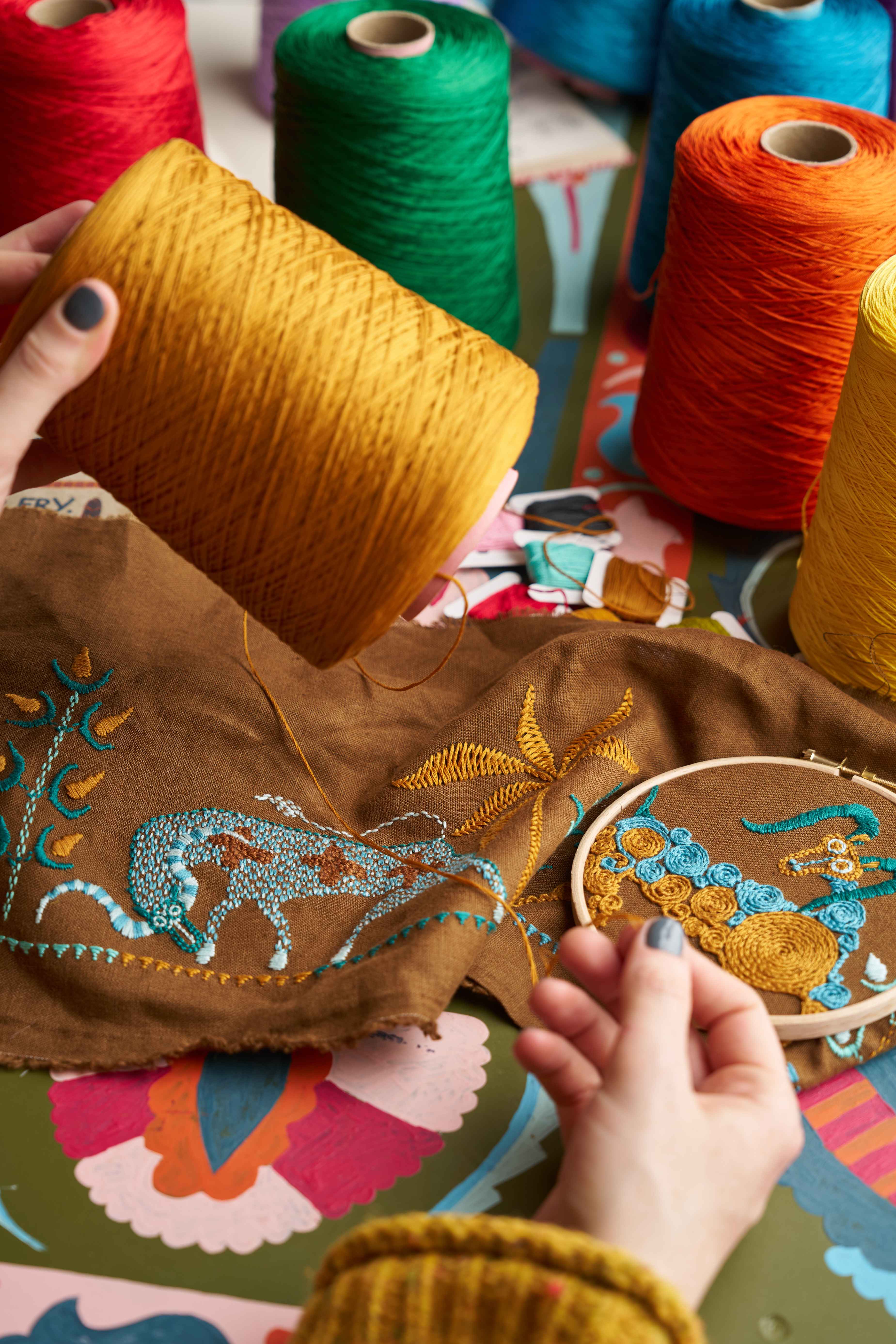
From Humble Beginnings: the Kantha Work of West Bengal

Originating from West Bengal and Bangladesh, kantha embroidery is one of the oldest and most treasured traditions in Indian textiles. This art form, known for its simplicity and beauty, has a history that spans centuries, evolving from humble beginnings into a globally recognized craft.
Kantha embroidery began as a practical solution to the challenges of textile scarcity in pre-industrial societies. In these communities, producing new textiles was a labour-intensive process – time consuming and expensive. As a result, every piece of fabric was cherished and repurposed until it could no longer serve its original purpose. The word "kantha" itself is derived from the Sanskrit word "kontha," meaning rags, reflecting its origins as a method of recycling worn-out garments.
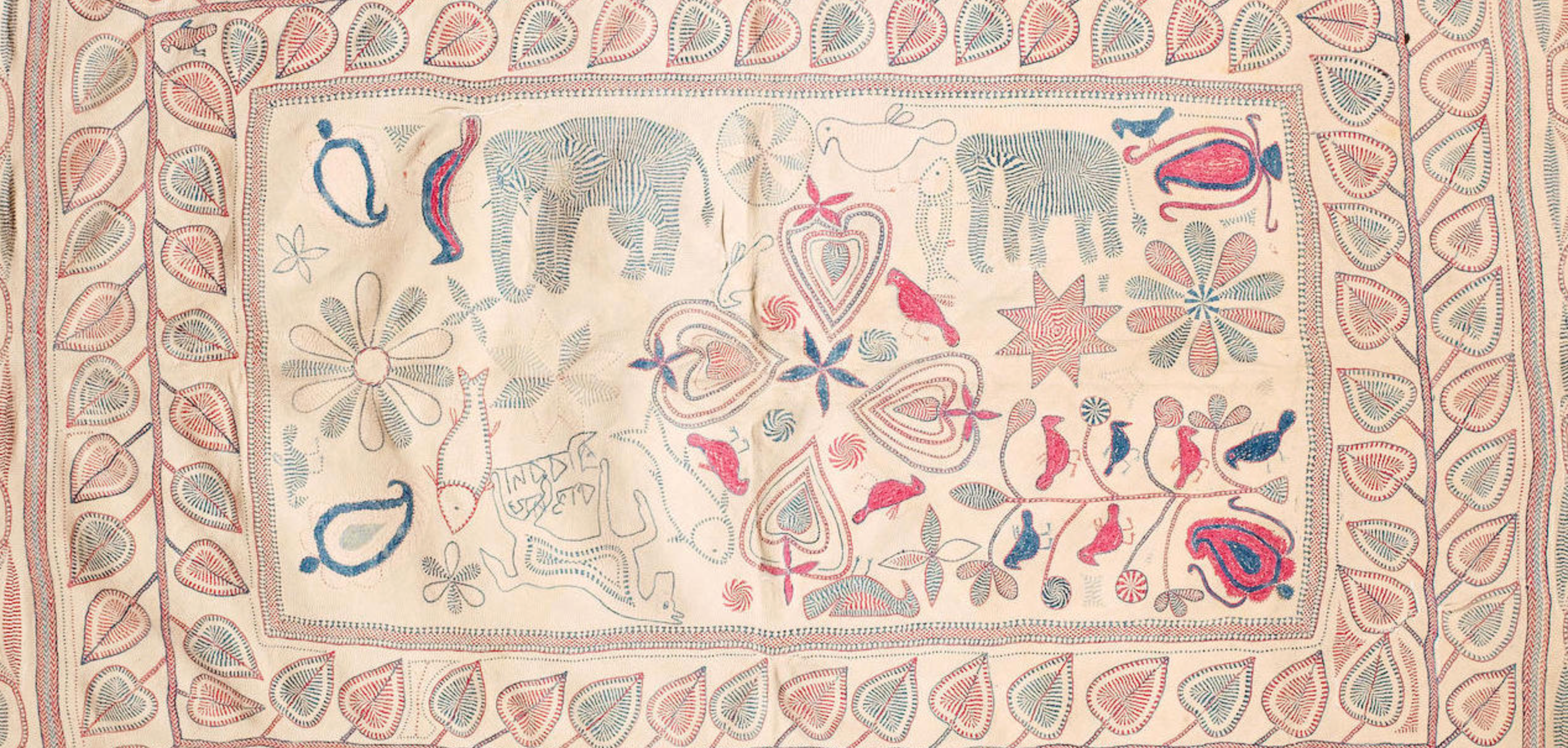
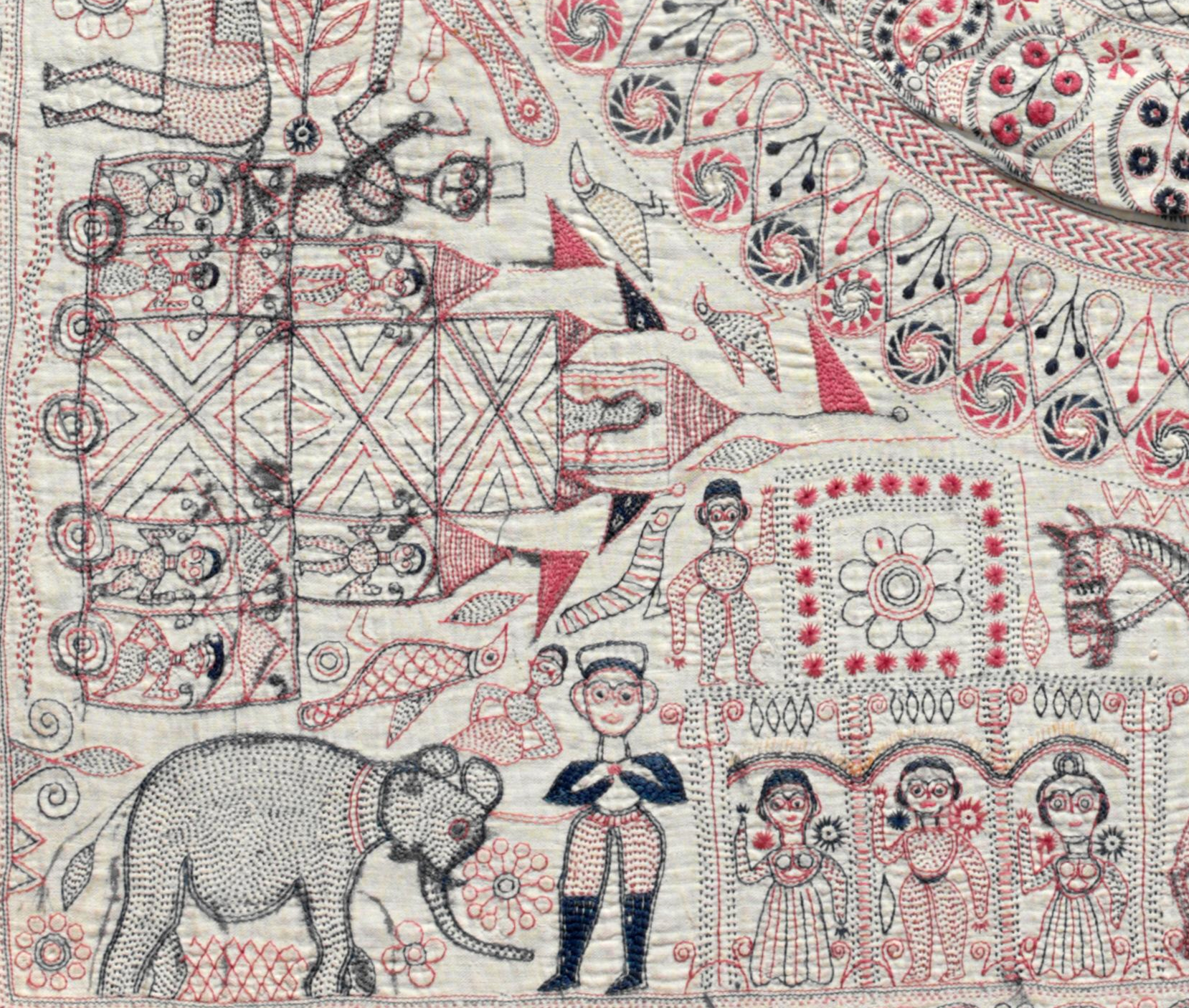
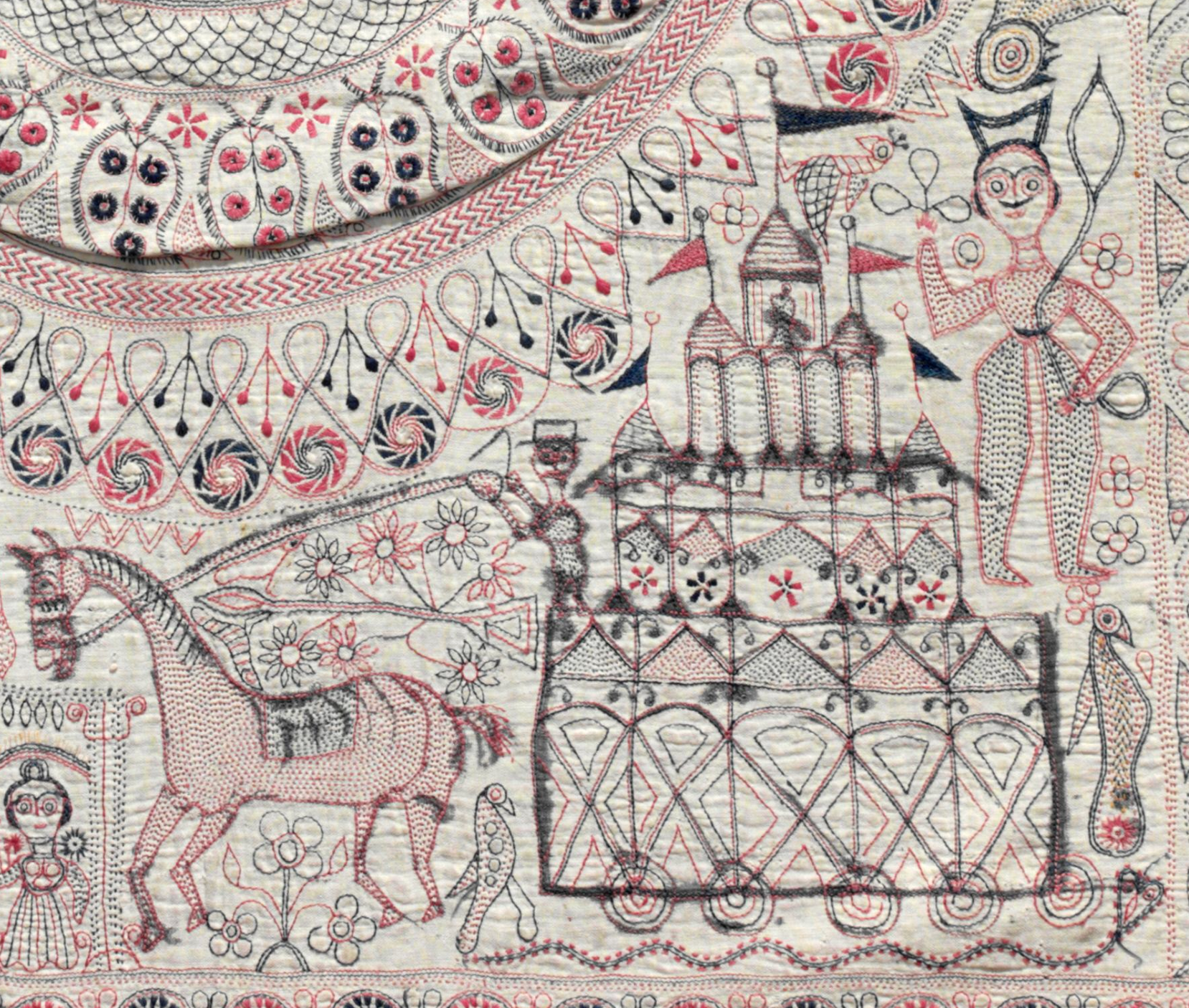
Traditionally, women in rural Bengal would gather old saris, dhotis, and other fabrics to create new items, breathing new life into these well-worn textiles. For example a pile of old saris could be transformed into a quilt, known as a "kantha," or repurposed into various everyday items such as baby swaddling cloths, storage bags, prayer mats, and pillowcases. Each kantha piece was more than just a functional item; it was a canvas for storytelling, where the maker could show their creativity, beliefs, and share their own experiences.
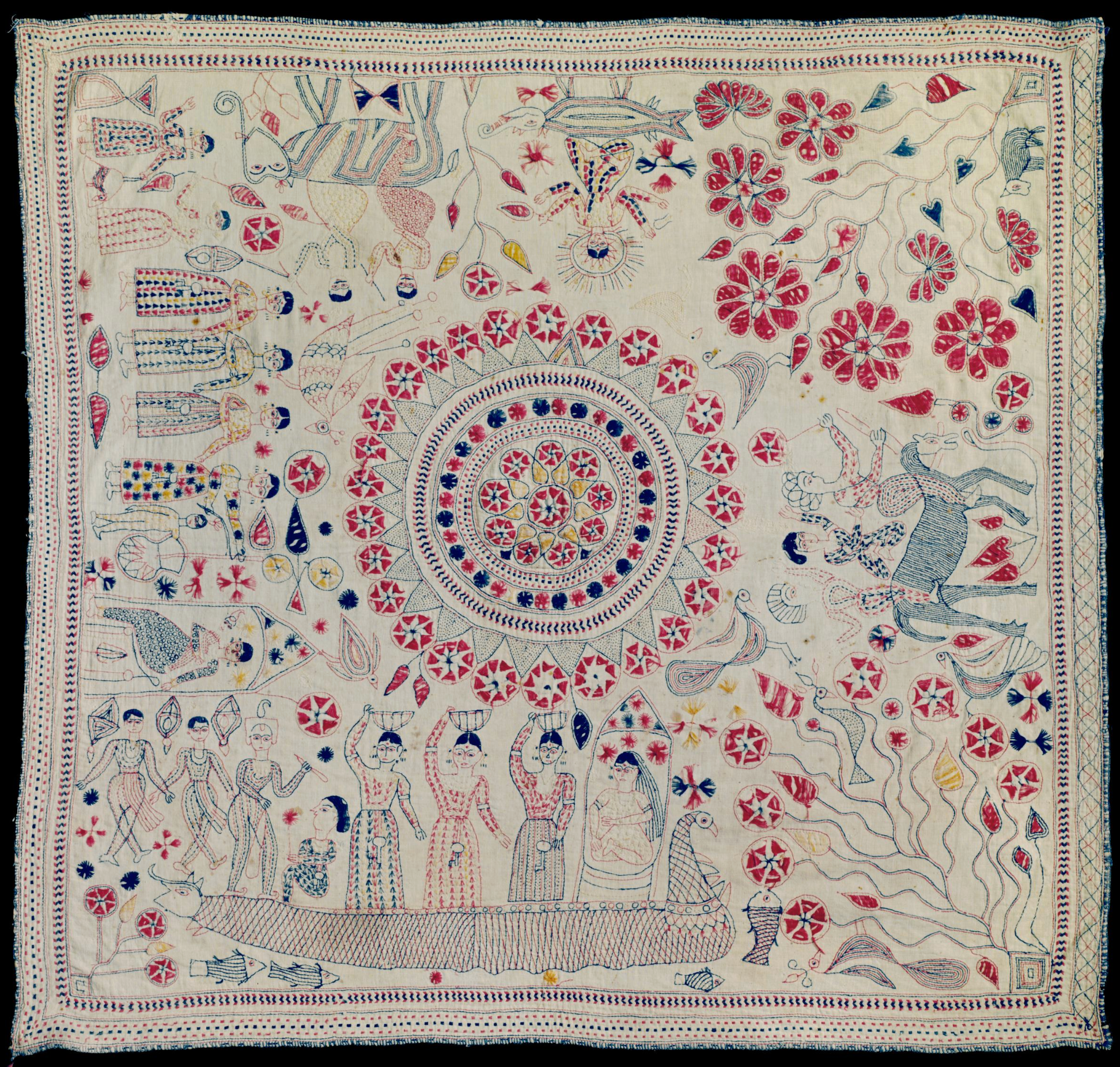
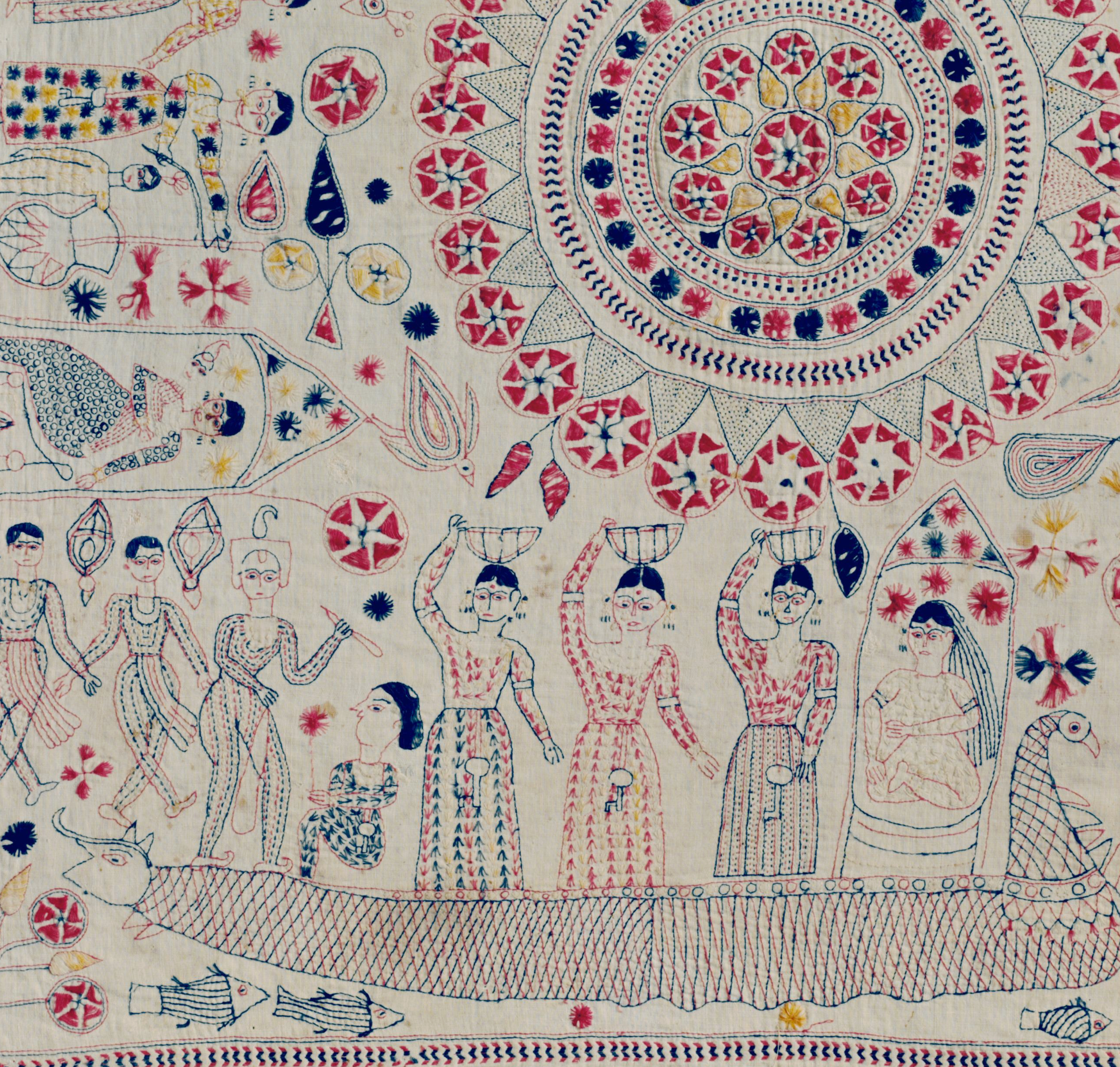
Creating a kantha is a meticulous process that begins with layering old fabrics. These layers are cut into the desired shape and size, after which long threads are pulled out from the edges to serve as embroidery thread. The layers are temporarily held together with loose basting stitches, and the desired pattern is outlined, either by stitching or block printing.
Once the groundwork is laid, the intricate embroidery begins. Although kantha embroidery is known for its decorative appeal, its primary function is to reinforce the fabric, ensuring that the finished piece is durable enough to withstand years, if not generations, of use. It is not uncommon for a single kantha to be worked on by several generations of women in a family, making each piece not just a work of art but a tangible link to the past.





In a world where daily life was dominated by household chores, farming, and child-rearing, kantha embroidery provides a rare opportunity for women to channel their creativity and imagination. The motifs they stitched into the fabric are often deeply personal, reflecting religious beliefs, folk traditions, and experiences. Common imagery that repeats across designs included scenes from Hindu mythology, depictions of local flora and fauna, and or geometric patterns designed to echo the rhythms of village life.
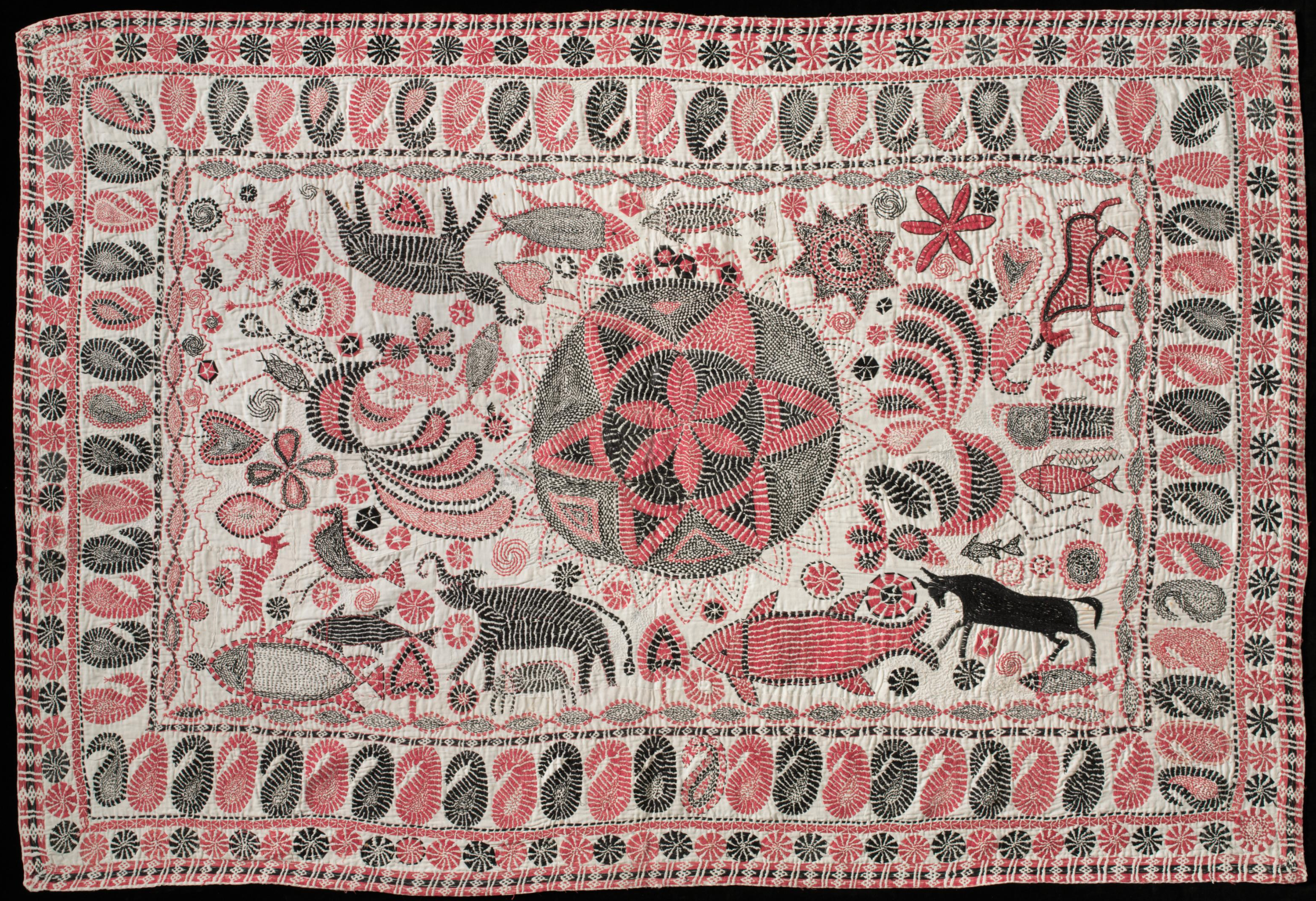
The simplicity of kantha designs hides the skill involved in their creation. Kantha work is distinguished by its use of the humble running stitch, the simplest of all embroidery stitches. Yet, in the hands of these killed artisans, this basic stitch becomes takes on a new life creating intricate patterns and textures. Running stitches are used not only for outlining designs but also for filling in large areas, creating a unique sense of transparency and depth. This technique makes kantha embroidery accessible to beginners, albeit allow lots of time and practice to build up your skill. The pieces shown here may look simple but they are incredibly technically challenging to achieve!

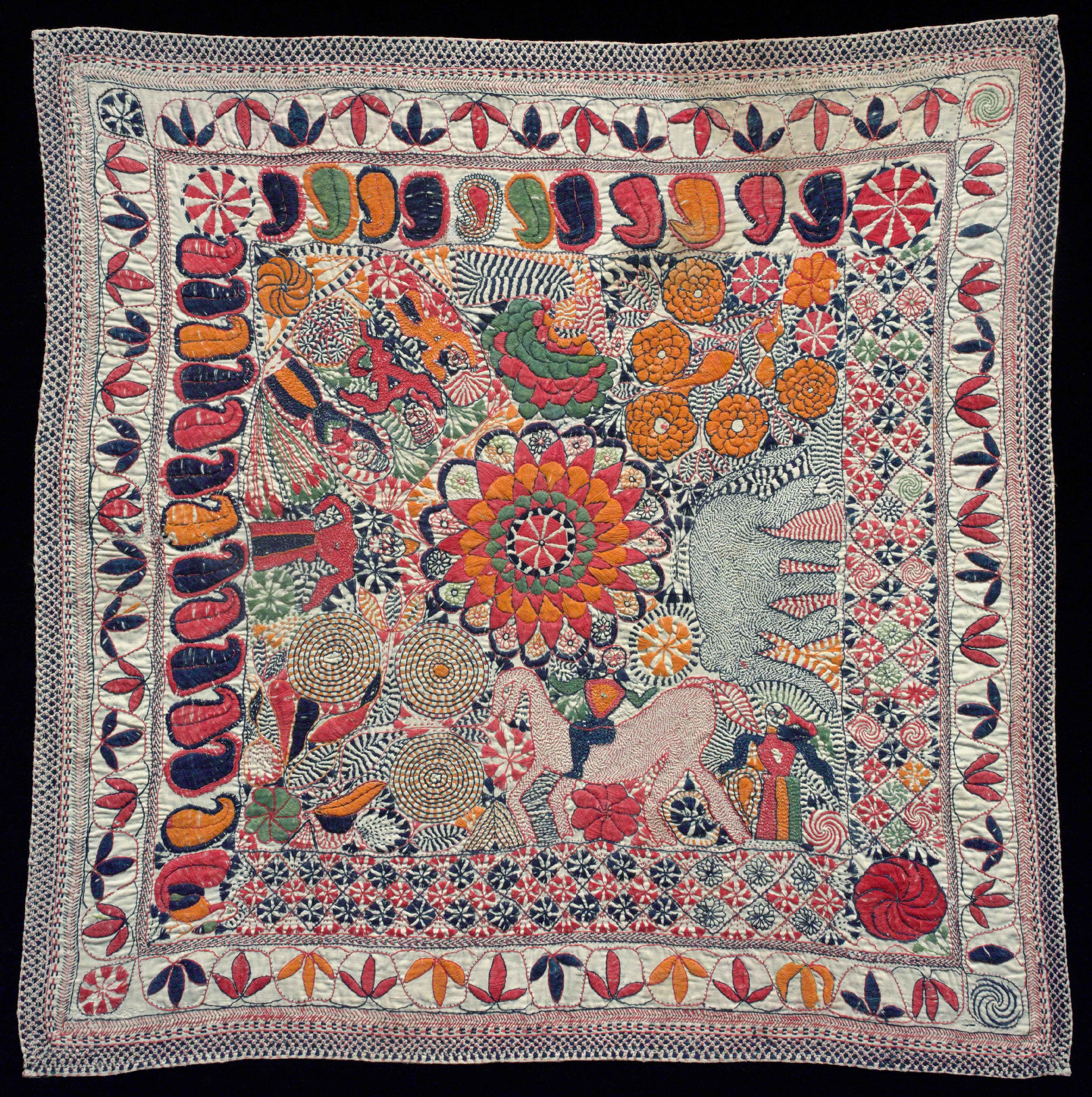
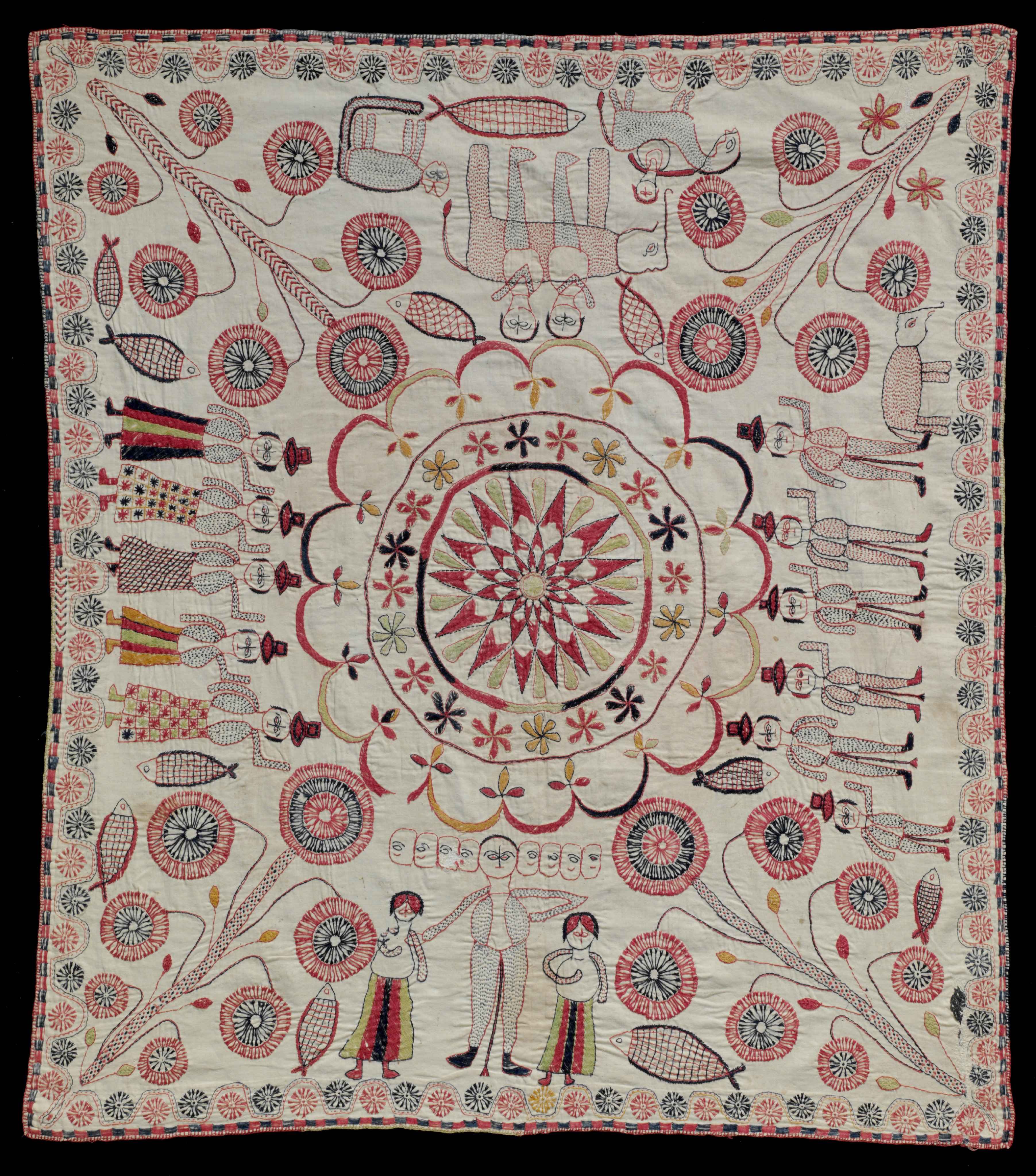
Today, kantha embroidery has grown from its humble origins to become a one of the most respected and valued forms of textile art. What was once a rural craft practiced by women in the villages of Bengal has gained international acclaim. The commercialisation of kantha work has also provided economic opportunities for rural women, allowing them to earn a livelihood while preserving and promoting their cultural heritage.
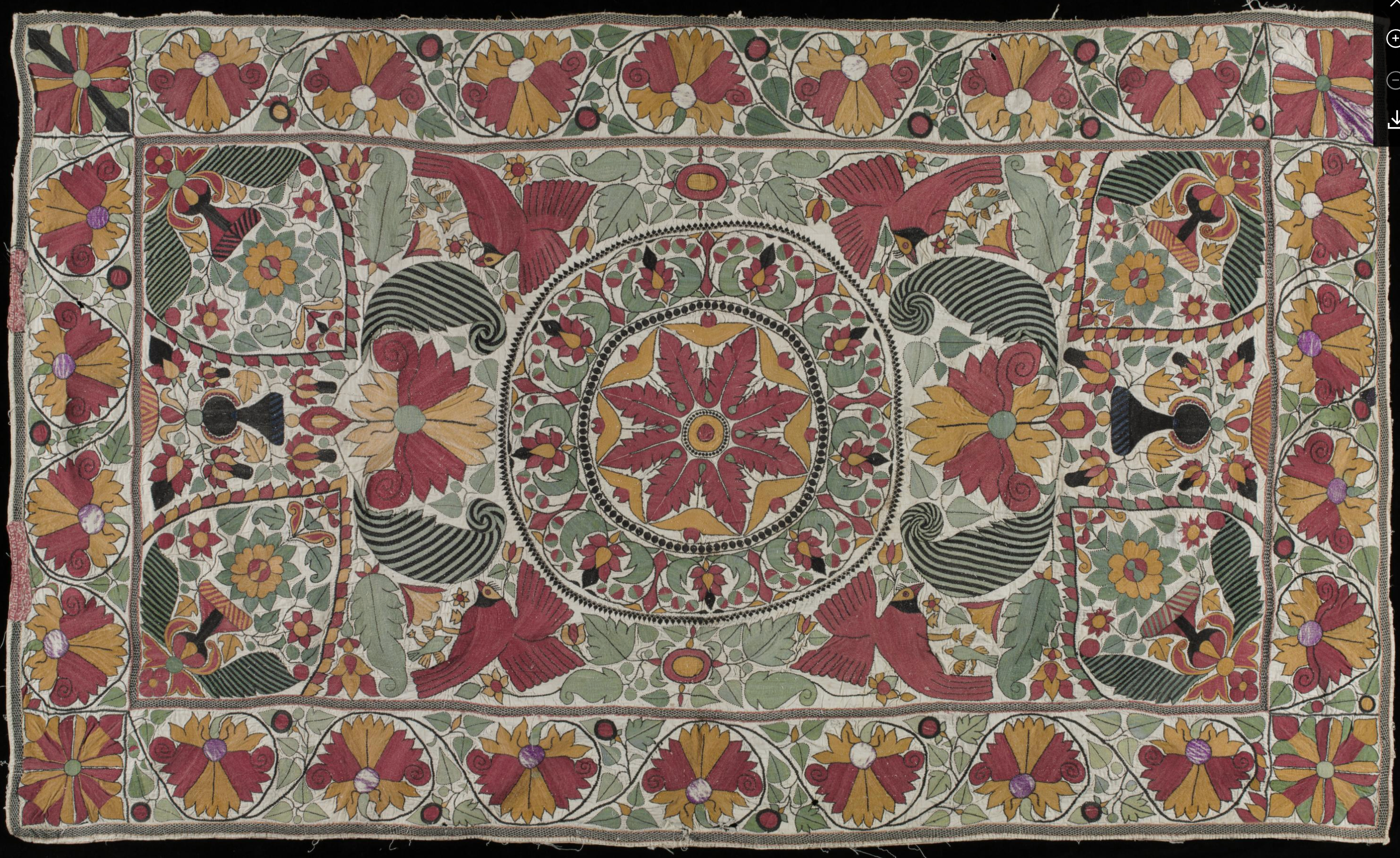
A lot of the designs and techniques have found their way into every aspect of modern life, from fashion, home decor, and accessories, from scarves to cushion covers and wall hanging. These designs, originating in Bengal and Bangladesh, have inspired no end of the items we interact with on a day to day basis.
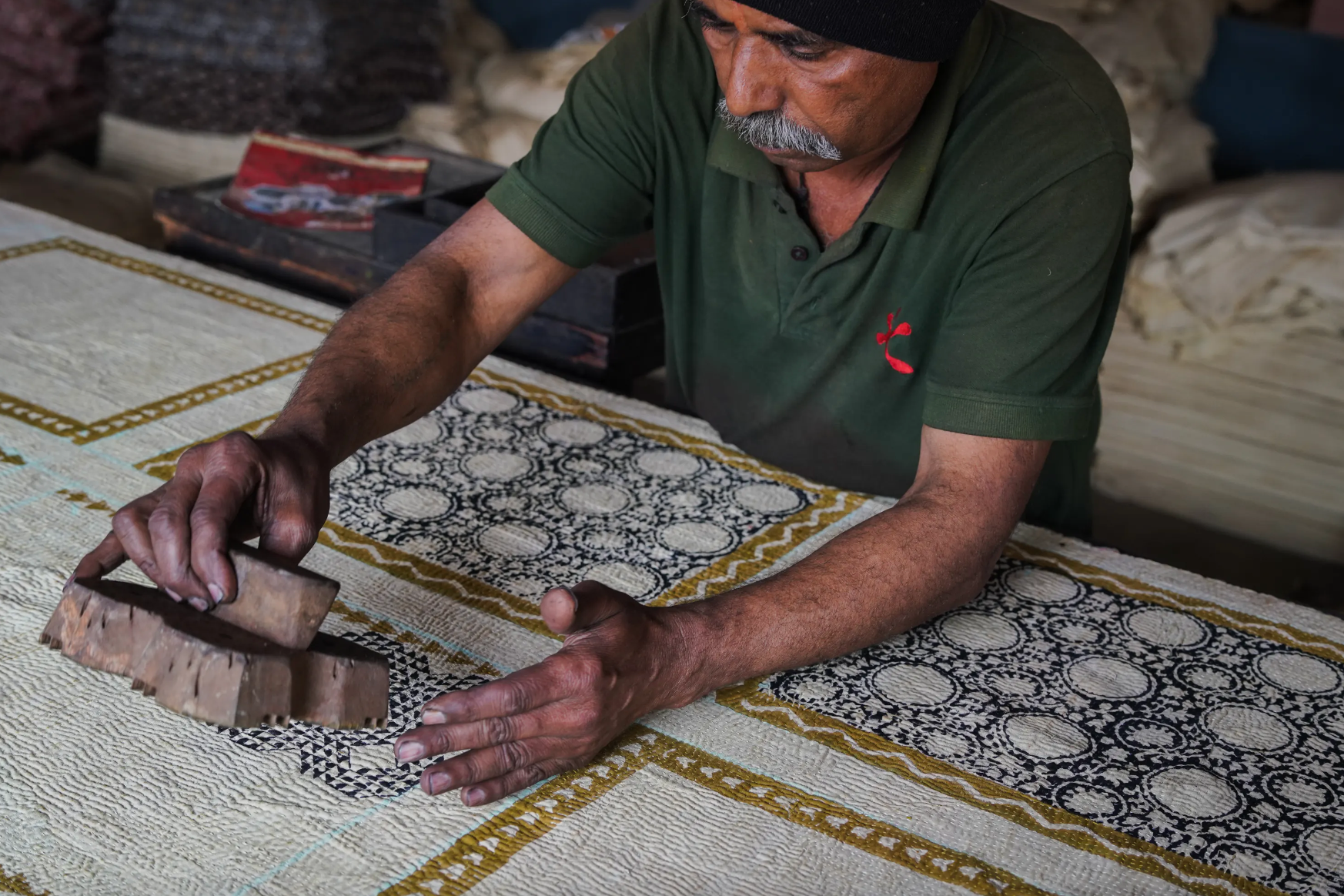
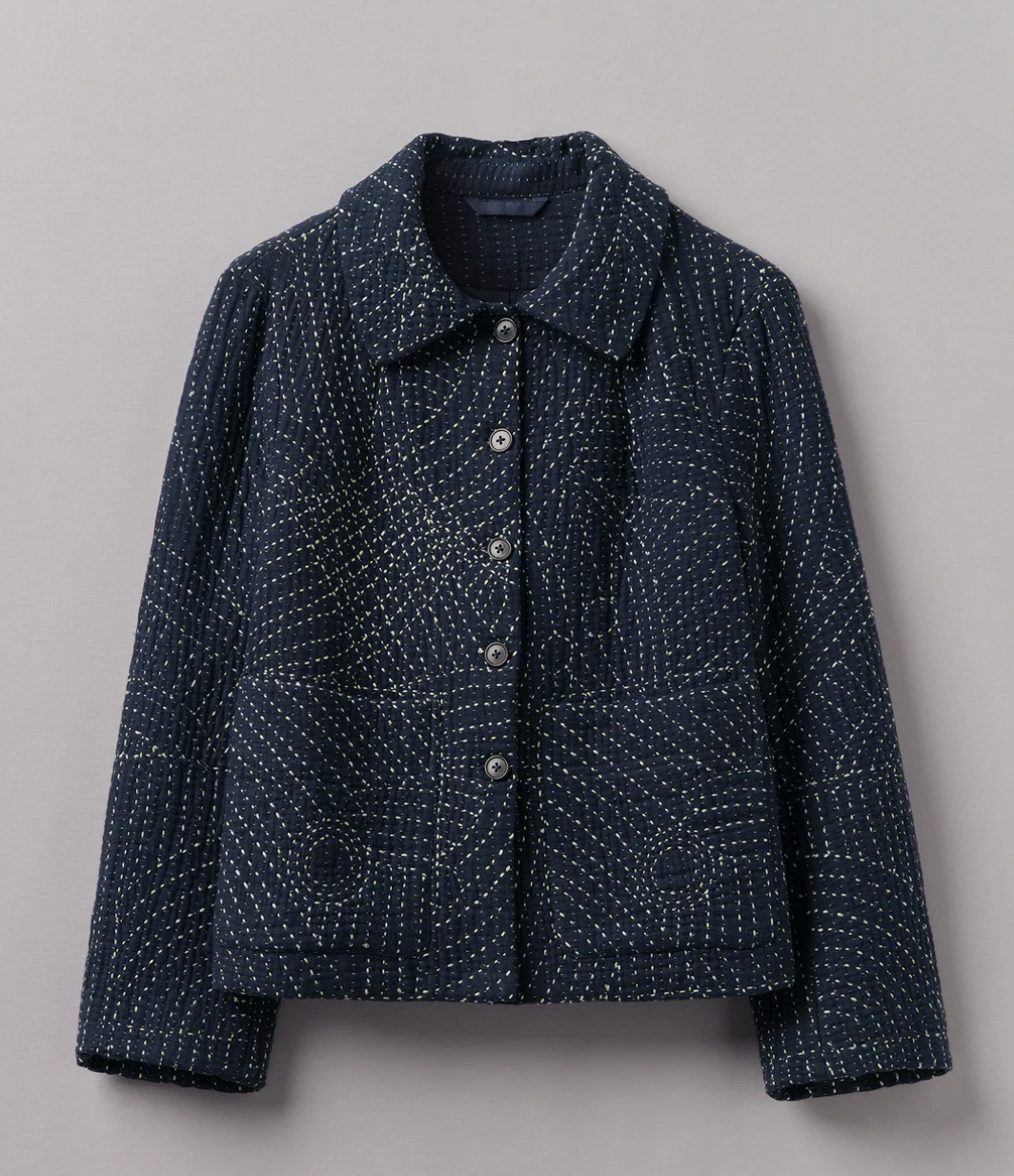
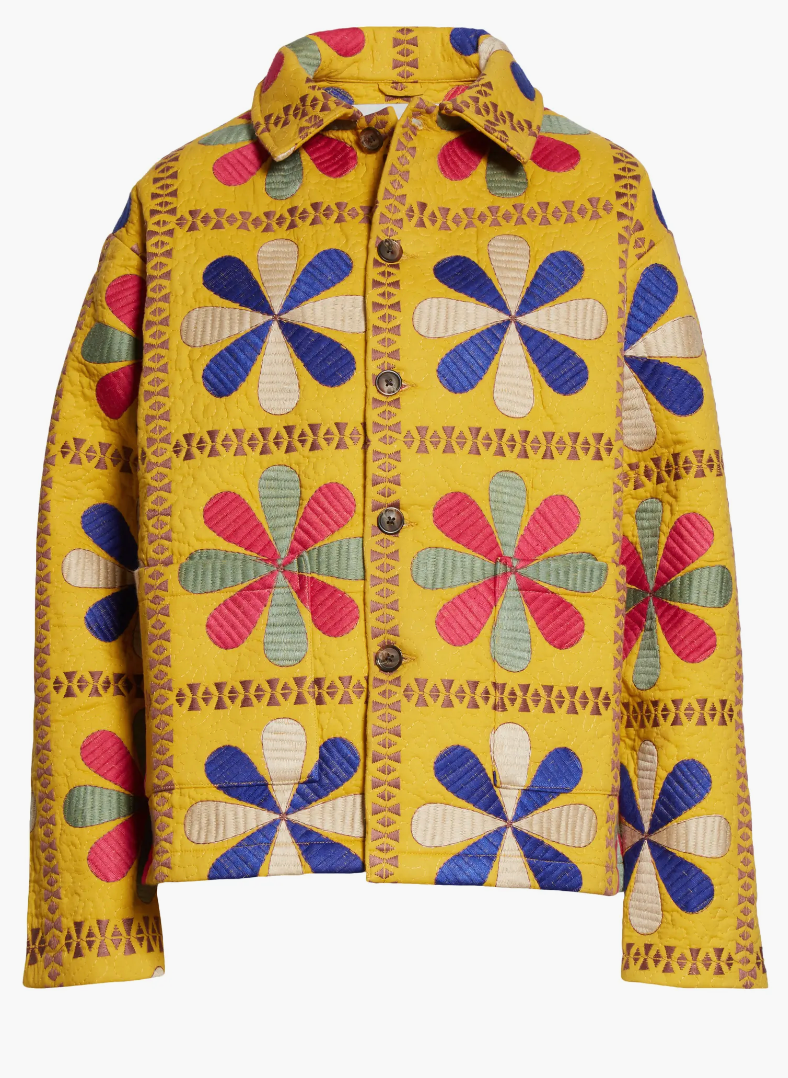
If you, like me, are inspired by the beauty and history of kantha embroidery, then try your hand at creating your own kantha-inspired design. The simplicity of the running stitch makes it an ideal starting point for beginners, while the rich tradition of kantha offers endless inspiration for more experienced embroiderers. I have recorded a video below showing you the simple technique of running stitch.
Quick Skills: How to do Running Stitch
Or, if you aren’t sure where to begin with your own design, then take a look at our "The Lion, The Boar, and The Vulture" embroidery kit. Whilst my design tells the story from Greek fabulist, Aesop, the style of stitching was inspired by kantha work. Depicting each of the characters in the story in running stitch. It’s a perfect way to practice the technique whilst still being guided through the design.

